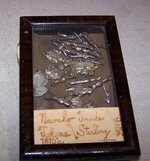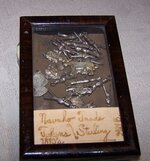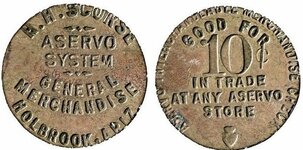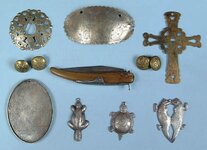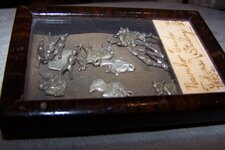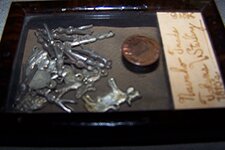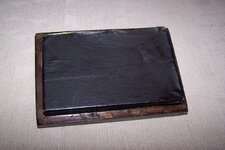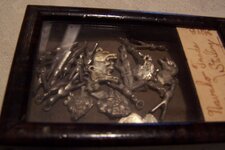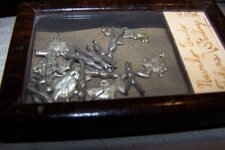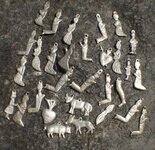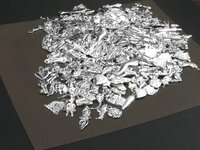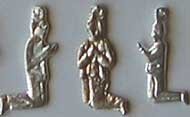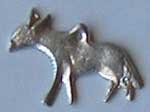foundatreasure
Jr. Member
- Jul 8, 2011
- 26
- 0
I stumbled on this site trying to research a treasure find. I hope it is OK to post for other than a find with a metal detector. I own one but haven't used it yet!
Anyway, found a sealed box(at a thrift store) that is marked "Navaho(sic) Trade Tokens\Sterling 1810's 3429B(a catalog number?)
I've never seen such things before & wondered if anyone new anything about them.
Looks like there is about 20 items in the box. It is sealed so I didn't think I should open it as it looks very old itself.
Appears there is a crude Bull, a Donkey, a Kneeling person, 2 heads that look like Native American person on a buffalo head nickel, 3 other (female?) heads that remind me of a liberty dime & about 12 stick people. The 12 stick people have similar hash marks on them like a number sign # but with only 1 vertical line. They are all a little different. On the non-stick people, didn't see any marks.
Any info is appreciated!
Anyway, found a sealed box(at a thrift store) that is marked "Navaho(sic) Trade Tokens\Sterling 1810's 3429B(a catalog number?)
I've never seen such things before & wondered if anyone new anything about them.
Looks like there is about 20 items in the box. It is sealed so I didn't think I should open it as it looks very old itself.
Appears there is a crude Bull, a Donkey, a Kneeling person, 2 heads that look like Native American person on a buffalo head nickel, 3 other (female?) heads that remind me of a liberty dime & about 12 stick people. The 12 stick people have similar hash marks on them like a number sign # but with only 1 vertical line. They are all a little different. On the non-stick people, didn't see any marks.
Any info is appreciated!


